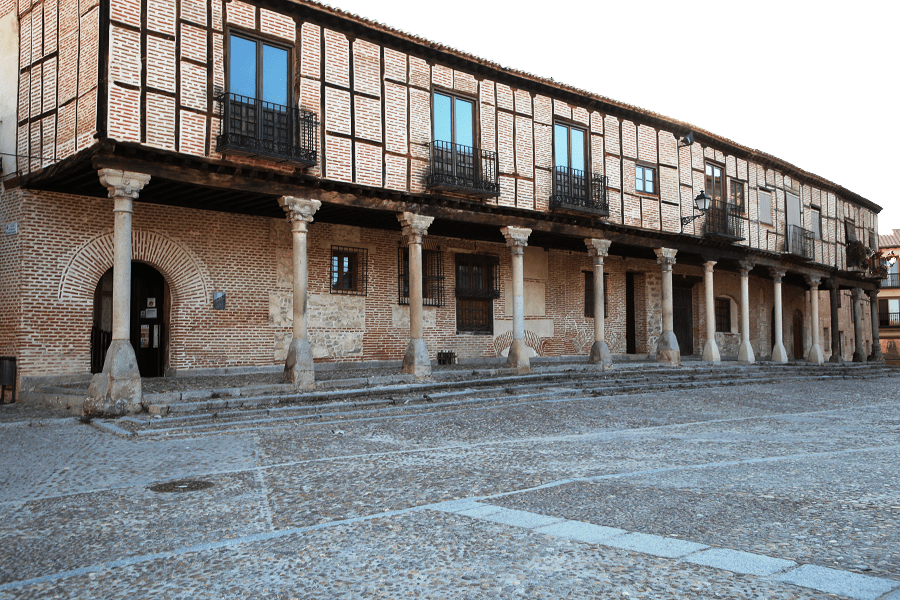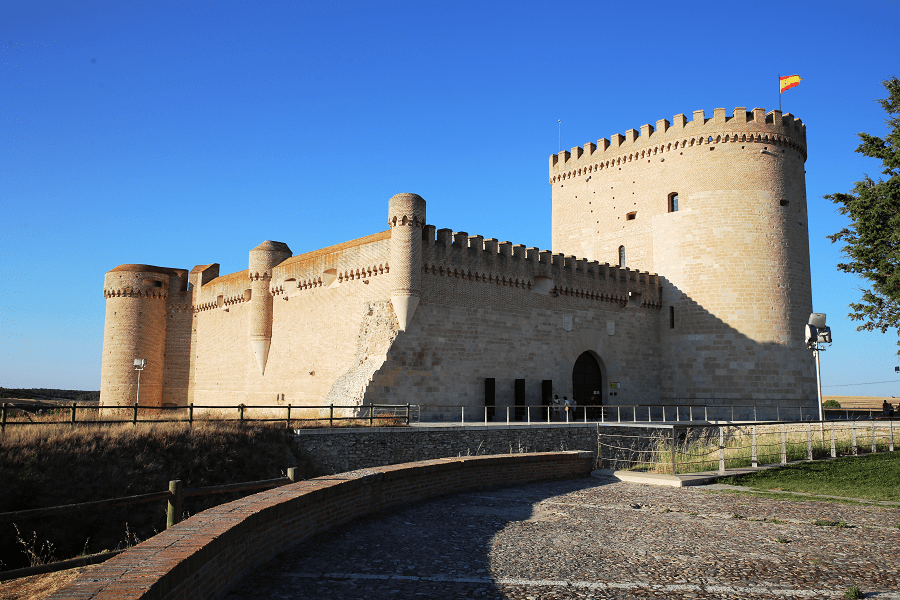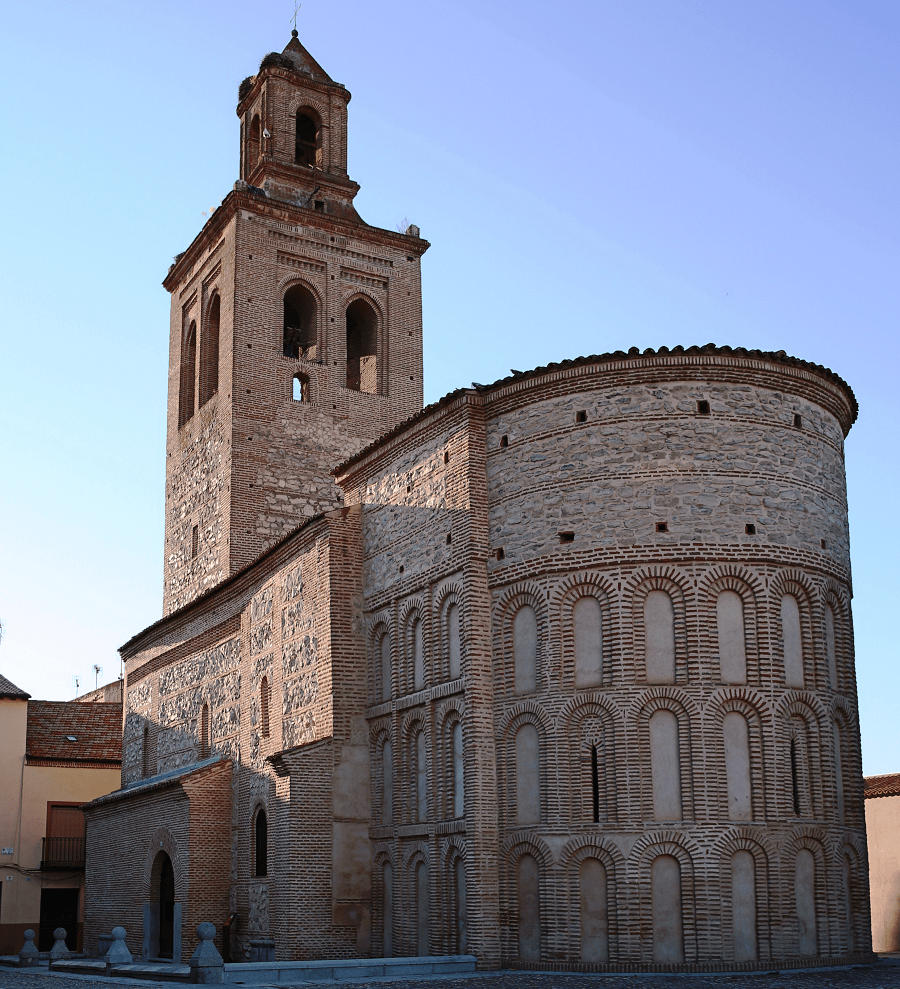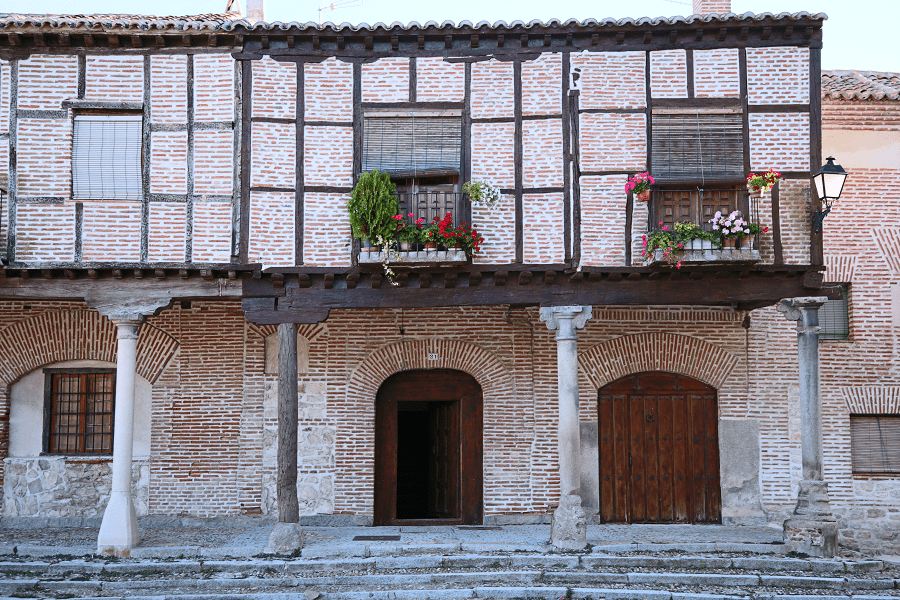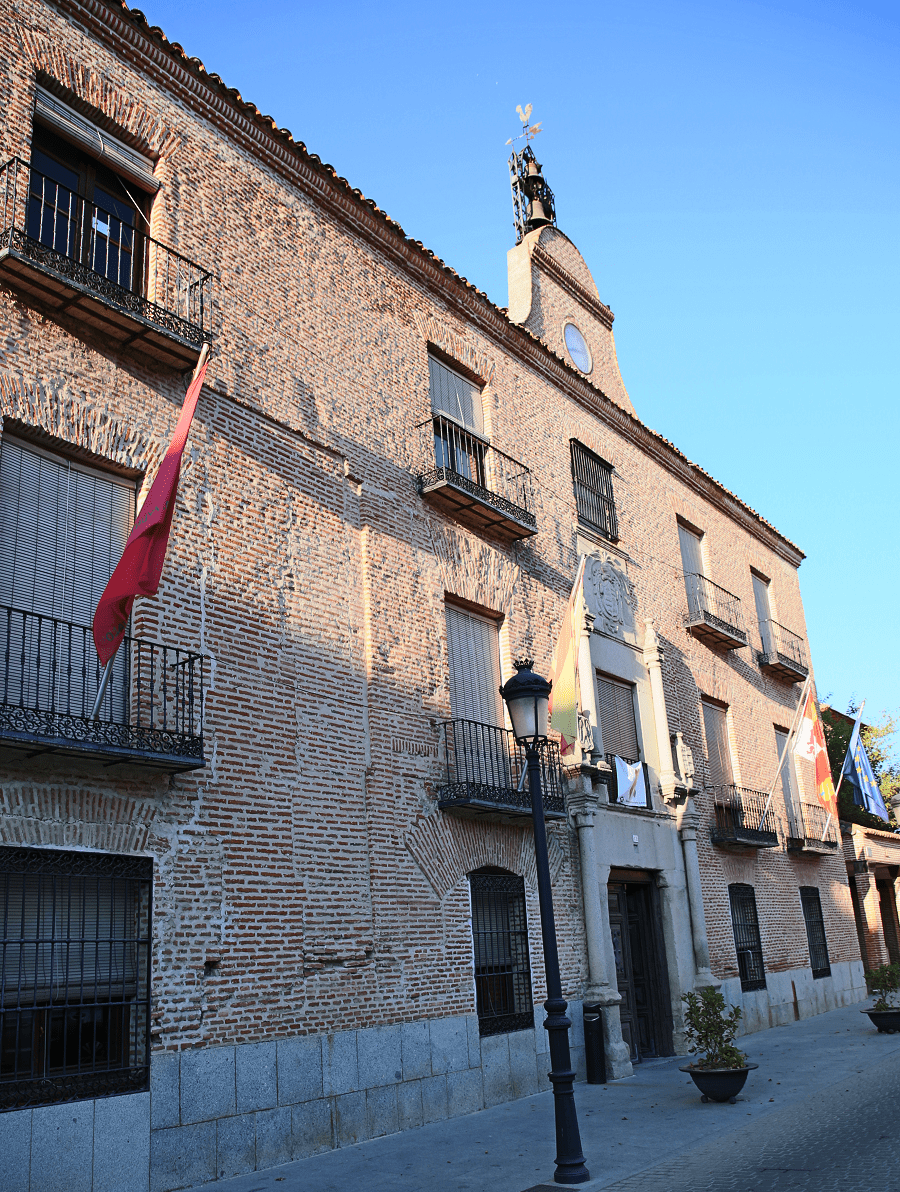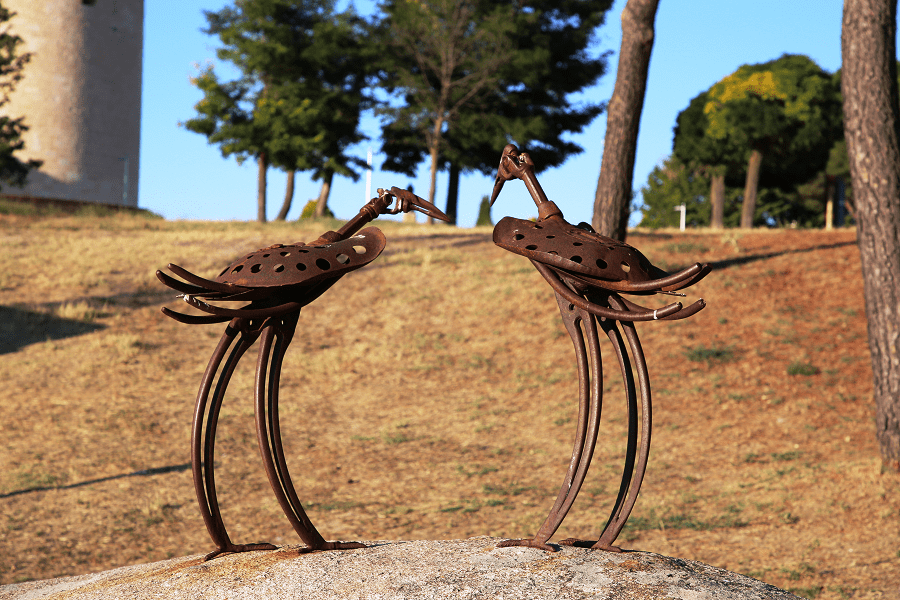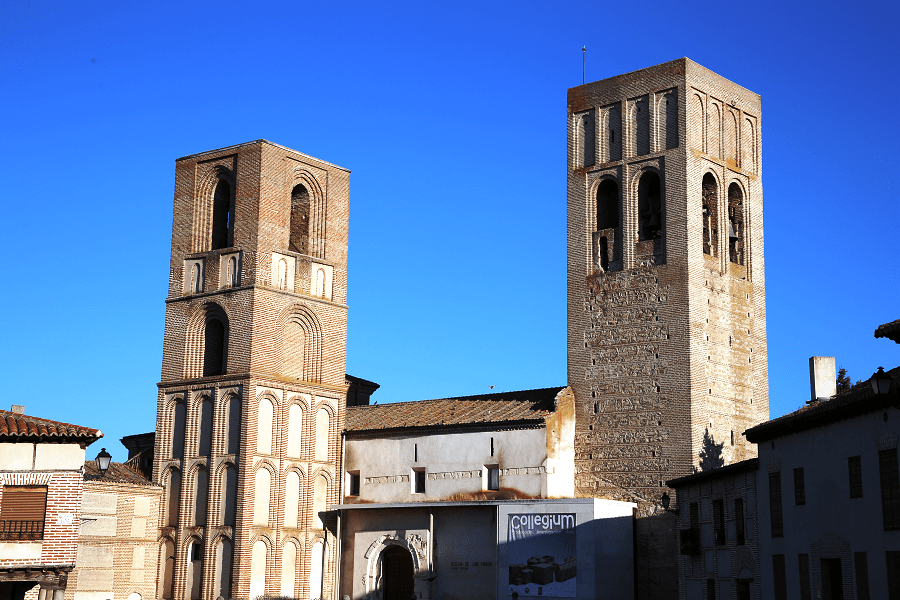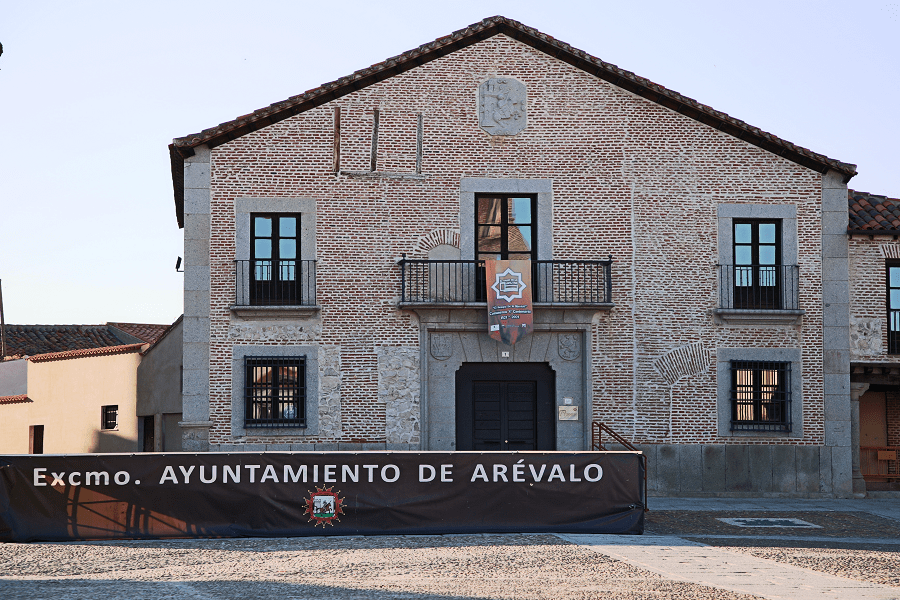Arévalo is a city and a municipality in the province of Ávila and is part of the autonomous community of Castile and León, Spain.
The old town of Arévalo has been declared a site of cultural interest; In it, a remarkable number of examples of Castilian Mudejar architecture are preserved – also called «brick Romanesque» – and it constitutes one of the most outstanding places in the region.
Main attractions
The Castle of Arévalo, also known as the Castle of the Zúñiga, is a fortification from the 15th century. It is owned by the Ministry of Agriculture, Fisheries and Food and managed by the Agrarian Guarantee Fund.
The castle of Arévalo stands at one end of the town on the edge of a plateau area, on the confluence of the Arevalillo and Adaja rivers.
The castle has an irregular pentagonal plan, topped in each corner with small circular towers, except in the case of the keep, which was built on a previous tower in the Mudejar style. Its structure, which shows Italian influence, is only part of the original, as can be seen in the engraving by Francisco Javier Parcerisa. It is made up of two juxtaposed enclosures: one rectangular and the other triangular.
Along its upper part there are sentry boxes and machicolations similar to those of the Coca castle, which suggests that they are works by the same anonymous architect.
The city Wall had 5 gates and formed a triangle in whose upper vertex was the castle. The two sides of the triangle are formed by the Arevalillo and Adaja rivers. The base of the triangle consisted of a double wall with a moat to the south.
You can see the door called “Arco del Alcocer”, popularly called “Arco de la Cárcel” because it was used as a local prison in certain periods, and which was the main entrance of the wall, currently hosting the tourist office of the city.
Parish church of Santo Domingo de Silos was built outside the walls and located in what is currently known as Plaza del Arrabal. The remains of San Vitorino, patron of Arévalo, are venerated there, as well as the new image of the Virgen de las Angustias, patron saint of the city, rescued after its provisional abandonment when the Church of the Convento del Real was demolished. It has several works of art, highlighting its image of San Francisco de Asís and the impressive ironwork. It is the main Church of Arévalo today.
San Juan Bautista church was the church of the Trastamara palace in Arévalo. Its origin dates from the late 12th century to the beginning of the 13th century. Between the 16th and 19th centuries the church underwent major renovations; including those to the adaptation of the temple to a baroque style.
Main Square is typically Castilian, porticoed, that is, with arcades. Declared a Historic-Artistic Complex.
Palace of the Sedeño is located on Calle de Santa María. It is a palace-house that has a rectangular tower of 18 m. The construction of the latter dates from around the year 1400, while the rest of the adjoining building dates from the 15th centuries.
Gutiérrez-Altamirano Palace is located on Calle Larga and is divided into several private houses. It is a house-palace of the Altamirano Lords. One of its peculiarities is a corner balcony with an Ionic capital column, very similar to the characteristic corner balconies from Extremadura. It is on the corner of the Callejón del Paraíso. The grandparents of Hernán Cortés lived in this palace.
The Medina Bridge crosses over the Arevalillo. Built in mudéjar style in the 14th century, it displays three main eyes in the form of pointed arches. It was declared monumento histórico-artístico (precursor of the status of Bien de Interés Cultural via Royal Decree issued on 19 October 1983.
The Arévalo History Museum, also known as Arevalorum, is a museum dedicated to the history of the city, inaugurated in August 2011 in the Casa de los Sexmos, a former medieval site of the council house. It depends on the Municipality of Arévalo.
Festivals
Arévalo celebrates the festival of its patron saint San Victorino on 7 July, with its traditional parade of cabezudos, the opening of its fairground, and bullfights in the town’s streets. The festivals conclude with fireworks from the castle until 11pm.
How to get to?
The train line Madrid-Hendaya has a stop in this town. From this line, the town is communicated thanks to its numerous regional trains with cities such as Madrid, Ávila, Medina del Campo, Valladolid, Burgos, Palencia, Vitoria and Santander.
From Avila 39 min (52.2 km) via N-403
From Valladolid 1 hr 4 min (88.7 km) via A-62 and A-6
From Madrid 1 hr 25 min (126 km) via AP-6 and A-6
Main information
Area: 45 sq. km (municipality)
Coordinates: 41°04′00″N 4°43′00″W
Population: 7960
Languages: Spanish
Currency: Euro
Visa: Schengen
Time: Central European UTC +1




